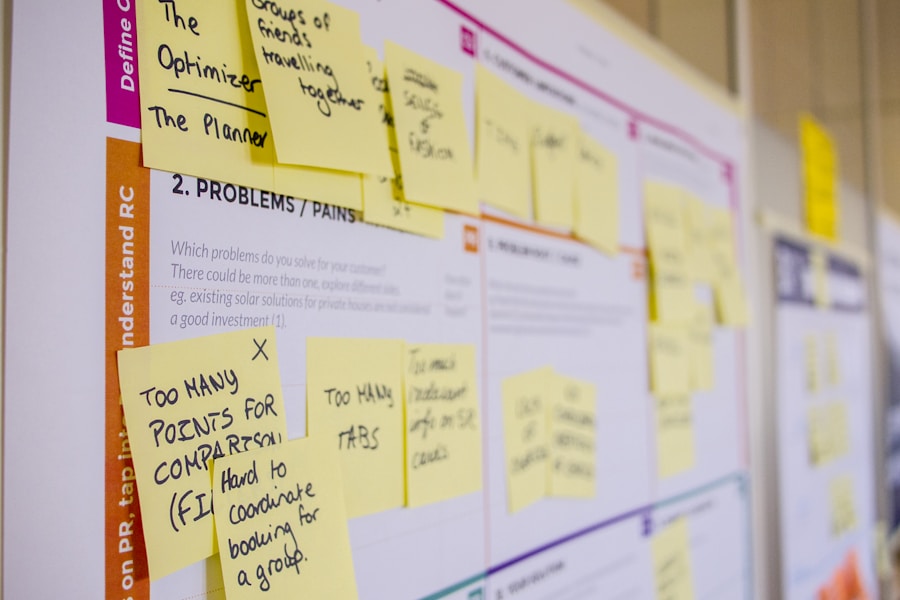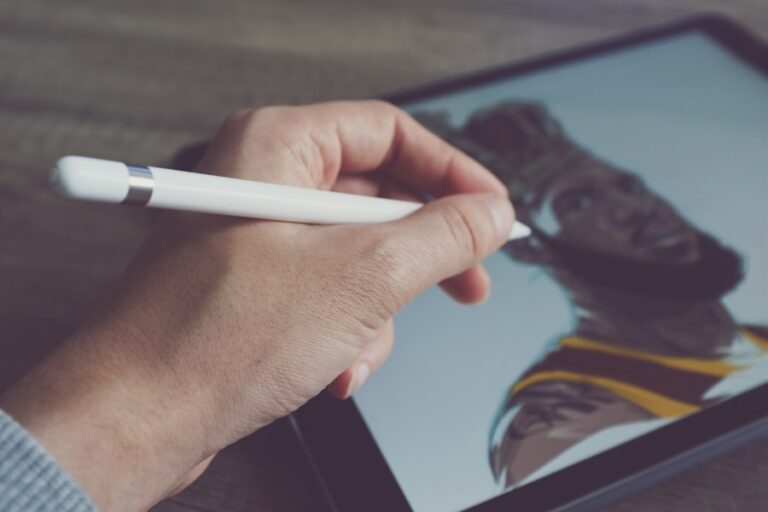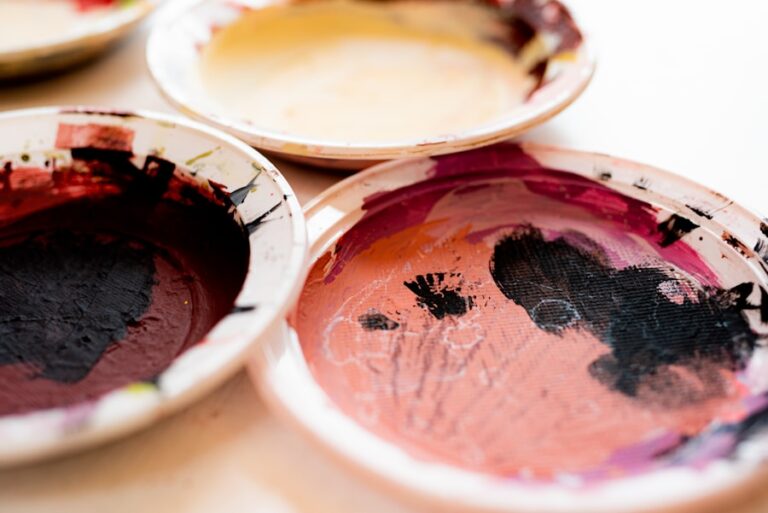Elevate Your Artistic Process: Creating an Inspiring Digital Art Studio
When it comes to designing your studio space, it’s important to consider the layout and functionality of the area. Think about the type of work you’ll be doing and how much space you’ll need for equipment, storage, and movement. Consider the flow of the space and how you can optimize it for efficiency and productivity. It’s also important to think about the aesthetic of the space and how it can inspire and motivate you. Whether you prefer a minimalist, modern look or a cozy, eclectic vibe, your studio space should reflect your personal style and creativity.
In addition to the layout and aesthetic, consider the acoustics of the space. If you’ll be recording audio or working with sound, it’s important to minimize echo and outside noise. This may involve adding soundproofing materials or strategically placing furniture and equipment to absorb sound. Finally, consider the practical aspects of the space, such as access to power outlets, internet connectivity, and ventilation. These details may seem small, but they can have a big impact on your overall comfort and productivity in your studio space.
Choosing the Right Equipment and Software
Choosing the right equipment and software for your studio is crucial for producing high-quality work. When it comes to equipment, consider the specific needs of your work. For example, if you’re a photographer, you’ll need a high-quality camera, lenses, and lighting equipment. If you’re a musician, you’ll need instruments, microphones, and recording equipment. It’s important to invest in reliable, durable equipment that will meet your needs and stand the test of time. Additionally, consider the compatibility of your equipment with any software you’ll be using. For example, if you’re a graphic designer, you’ll need a computer with sufficient processing power and memory to run design software smoothly.
In terms of software, there are countless options available for creative professionals. Whether you’re editing photos, producing music, or designing graphics, there are software programs tailored to your specific needs. It’s important to research and test different software options to find the best fit for your workflow and creative style. Consider factors such as user interface, features, compatibility with other programs, and customer support. Investing in high-quality equipment and software will not only improve the quality of your work but also streamline your creative process.
Organizing Your Digital Assets
Organizing your digital assets is essential for maintaining a productive and efficient studio space. Whether you’re working with photos, videos, music files, or design projects, it’s important to have a system in place for storing and accessing your digital assets. Start by creating a folder structure that makes sense for your work. This may involve organizing files by project, client, date, or type of media. Consider using descriptive file names and adding metadata to make it easier to search for specific files later on.
In addition to organizing your files on your computer, consider implementing a backup system to protect your digital assets. This may involve using an external hard drive, cloud storage, or a combination of both. Regularly backing up your files will give you peace of mind and protect against data loss in the event of a hardware failure or other unforeseen circumstances. Finally, consider implementing a file management system or digital asset management (DAM) software to streamline the organization and retrieval of your digital assets. These tools can help you stay organized and focused on your creative work without getting bogged down by file management.
Creating a Comfortable and Inspiring Environment
Creating a comfortable and inspiring environment in your studio space is essential for maintaining creativity and productivity. Start by considering the ergonomics of your workspace. Invest in a comfortable chair that supports good posture and consider adding ergonomic accessories such as a keyboard tray or monitor stand. Additionally, consider the lighting in your studio space. Natural light is ideal for creating an inviting and energizing atmosphere, so try to position your workspace near a window if possible. If natural light is limited, consider investing in high-quality artificial lighting that mimics natural light.
In addition to comfort, consider adding elements that inspire creativity in your studio space. This may involve displaying artwork or photographs that resonate with you, adding plants or greenery for a touch of nature, or incorporating meaningful objects that spark joy and inspiration. Consider the color scheme of your studio space as well. Research has shown that certain colors can have a positive impact on mood and creativity, so consider incorporating colors that resonate with you and promote a positive atmosphere. By creating a comfortable and inspiring environment in your studio space, you’ll be better equipped to produce high-quality work and stay motivated in your creative pursuits.
Incorporating Natural Light and Greenery
Incorporating natural light and greenery into your studio space can have a significant impact on your mood and productivity. Natural light has been shown to improve mood, energy levels, and overall well-being. Positioning your workspace near a window or skylight can help maximize exposure to natural light throughout the day. If natural light is limited in your studio space, consider using full-spectrum light bulbs that mimic natural light to create a similar effect.
In addition to natural light, consider adding plants or greenery to your studio space. Research has shown that indoor plants can improve air quality, reduce stress, and increase productivity. Whether you have a green thumb or not, there are countless options for low-maintenance indoor plants that can thrive in a studio environment. Consider adding a few potted plants or hanging planters to bring a touch of nature into your workspace. Not only will this improve the aesthetic of your studio space, but it will also create a more inviting and calming atmosphere for creative work.
Personalizing Your Workspace
Personalizing your workspace is an important aspect of creating a studio environment that feels uniquely yours. Start by adding personal touches such as artwork, photographs, or mementos that hold special meaning to you. These items can serve as sources of inspiration and motivation as you work on creative projects. Additionally, consider adding elements that reflect your personal style and interests. Whether you prefer a minimalist aesthetic or a cozy bohemian vibe, incorporating elements that resonate with you will help create a workspace that feels comfortable and authentic.
In addition to personal touches, consider adding functional elements that cater to your specific needs and preferences. This may involve adding storage solutions that keep your workspace organized and clutter-free or incorporating tools and accessories that streamline your creative process. By personalizing your workspace to reflect your unique style and needs, you’ll create an environment that feels welcoming and conducive to creativity.
Maintaining a Clean and Functional Studio
Maintaining a clean and functional studio is essential for staying organized and productive in your creative work. Start by implementing a regular cleaning routine to keep your workspace tidy and clutter-free. This may involve dusting surfaces, organizing cables and equipment, and decluttering unnecessary items from your workspace. Additionally, consider implementing storage solutions such as shelves, drawers, and bins to keep your studio space organized and functional.
In addition to cleanliness, it’s important to regularly maintain and update your equipment and software to ensure optimal performance. This may involve cleaning and servicing equipment regularly to prevent dust buildup or wear and tear. Additionally, staying up-to-date with software updates and upgrades will ensure that you have access to the latest features and improvements in your creative tools.
By maintaining a clean and functional studio space, you’ll create an environment that supports creativity and productivity in your work. Regular maintenance will also prolong the life of your equipment and software, saving you time and money in the long run.






